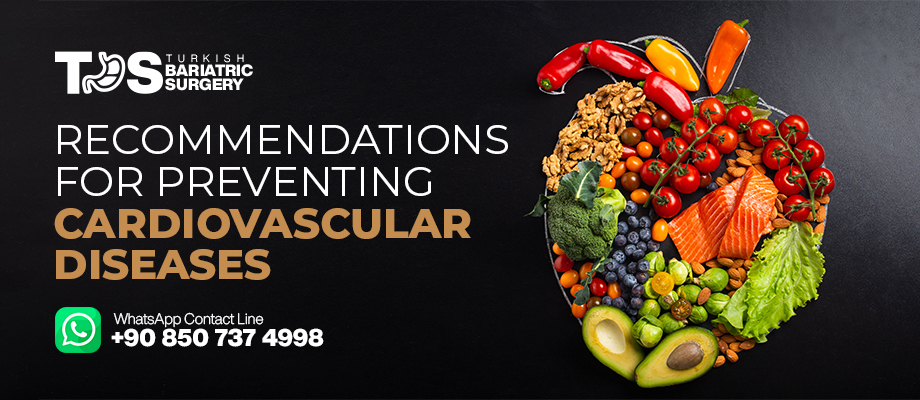
1-Cardiovascular Diseases
Cardiovascular diseases (CVD) are diseases of the heart and blood vessels. Many people die from CVD each year. It is even the number one cause of death for men and women in the United States. In our country, when we look at the Turkish Statistical Institute-2017 Cause of Death Statistics, it is seen that circulatory system diseases take the first place. Cigarette-alcohol use unbalanced, and malnutrition increase the risk of CVD. Looking at the basis of cardiovascular diseases, it has been observed that there is a very close relationship between nutrition and CVD. Nutrition is important in terms of improving mortality and morbidity in these patient groups. Adequate and balanced nutrition and medical nutrition therapy play a major role in the prevention and treatment of CVD.
Cardiovascular diseases:
-Hypertension
-Ischemic Heart Diseases
-Atherosclerosis
-Cerebrovascular Diseases
-Dyslipidemias
-Heart failure
-Transplantation
2-Risk Factors in Cardiovascular Diseases
Nutrition:
Inadequate and unbalanced nutrition
Atherosclerosis is a risk factor for CVD, especially coronary heart disease. A healthy diet is important for maintaining blood lipid profile, blood pressure and ideal body weight.
Consuming high amounts of saturated fatty acids increases the LDL cholesterol level and the total Cholesterol/HDL cholesterol ratio. Choosing fats containing polyunsaturated fatty acids instead of saturated fatty acids also reduces the risk of cardiovascular disease.
Omega-3 fatty acids docosahexaenoic acid (DHA) and eicosatetraenoic acid (EPA) reduce the risk of CVD. Mackerel, trout, herring are rich in EPA and DHA.
A high-fiber diet has been associated with a lower risk of CVD. Fiber reduces the absorption of cholesterol from the small intestine, thus reducing the levels of Total cholesterol and LDL cholesterol.
High salt consumption poses a threat to CVD, especially hypertension (HT). WHO has determined salt consumption as 5 g per day. Vegetable and fruit consumption should be consumed due to their antioxidant, functional components and high fiber content. In addition, according to studies, consumption of vegetables and fruits are foods that help reduce the risk of CVD.
Family history:
It is observed that individuals with a family history of CVD are more likely to encounter CVD risk in the future. In addition, studies argue that diseases such as hypertension, diabetes, and dyslipidemia may also be genetically based.
Smoking:
Studies have shown that approximately 10% of CVDs are smokers. Not only smoking, but also exposure to cigarettes increases the risk of disease. Many substances in cigarette smoke increase oxidation by damaging lipoproteins and reduce blood oxygen carrying capacity.
Diabetes:
Cardiovascular risk is directly proportional to the increase in blood glucose level. In addition, abnormal glucose levels in the blood can cause high blood pressure, low HDL cholesterol and high triglyceride (TG) levels. The fact that the blood glucose level was in the ideal range indicated that these risks were reduced.
3-Recommendations for Preventing Cardiovascular Diseases:
*First, a healthy lifestyle should be adopted.
* Tobacco use must be stopped.
* At least 150 minutes of moderate-intensity exercise per week should be done.
*Overweight individuals should consult a nutritionist to ensure body weight loss.
* Vegetable, fruit, vegetable or animal protein and fish consumption must be included in the nutrition program.
*Consumption of processed meat, trans fat, refined carbohydrates, packaged foods with added sugar should be avoided.
* Nutritional diversity should be given importance in the nutrition program. *Extra salt intake into the consumed food should be reduced and kept below 5 grams per day.


